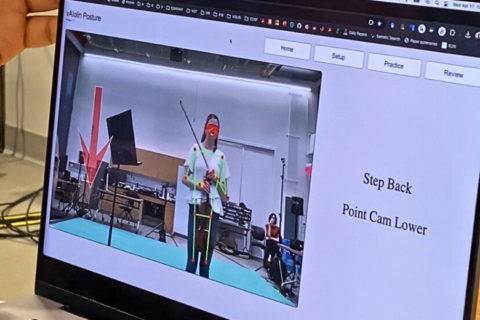This article was republished with permission from WTOP’s news partners at Maryland Matters. Sign up for Maryland Matters’ free email subscription today.
This content was republished with permission from WTOP’s news partners at Maryland Matters. Sign up for Maryland Matters’ free email subscription today.
Precinct-level election results will not be possible for Maryland’s presidential primary in June, the State Board of Elections said Wednesday.
That’s because a database that could sort results by neighborhood was designed back in February ― when the state was planning a typical, in-person election and before the spread of COVID-19 forced an emergency shift to a vote-by-mail election system, Donna J. Duncan, Assistant Deputy for Election Policy, told state board members during a teleconference on Wednesday.
Earlier this week, lawmakers pressed state elections officials to consider reinstating a precinct-level reporting process for the election, arguing that the micro-level data would help detect any anomalies in turnout figures or voting patterns during the state’s first widespread foray into mail-in voting. The requirement to report Election Day results by precinct was waived by the State Board of Elections earlier this month.
Duncan said the precinct-level results that are typically released are made possible by collecting the data at the ballot-scanning machines in individual polling places.
State law does not require precinct-level reporting for absentee ballots, and the ballots being mailed for the presidential primary were not designed to be processed by precinct. Overseas ballots have already been sent and millions of others are already printed, Duncan said.
Staff at the Board of Elections are exploring ways to incorporate precinct-level reporting for mailed ballots in future elections, including for next November if COVID-19 spread remains a concern, Duncan said.
She cautioned the board that creating precinct-level mail ballots would increase workload because dozens of different ballot styles would have to be generated for each county.
“It will triple, quadruple the level of work,” she said. “…It’s a labor-intensive process, but for the general, we’re seeing what we can do.”
Board member P.J. Hogan asked if there were other ways to monitor turnout abnormalities. Because the state’s voter registration database and elections results database are separate, the state will be able to generate precinct-level turnout statistics that could be analyzed.
Del. Carl Jackson (D-Baltimore County), who sent a letter to the board pressing for reinstatement of precinct-level election results, was dismayed to hear the board did not come up with a solution on Wednesday. He suggested that volunteers at local boards could still sort ballots by precinct as they’re received, though it would be a massive manpower effort.
“I just think there should be no excuse for not having this data at the precinct level,” Jackson said, noting that he would be a willing volunteer.
Sen. Cheryl C. Kagan (D-Montgomery), who shares Jackson’s concerns, said she hopes the current decision on precinct-level reporting will not set a precedent for future elections.
“I do hope that we will be able to get that kind of micro-analysis if we are facing a mail-in voting situation again in November,” Kagan said.
Five states ― Colorado, Hawaii, Oregon, Washington and Utah ― conduct all elections entirely by mail and all of them release voting results by precinct, Kagan said.
7th District results rolling in
State board members received an update about the 7th District special congressional election, which is being conducted primarily through mail with three in-person voting centers available to voters in Baltimore City, Baltimore County and Howard County next Tuesday.
Former U.S. Rep. Kweisi Mfume (D) and conservative commentator Kimberly Klacik (R) are squaring off for the right to replace the late Rep. Elijah E. Cummings (D).
The state has sent about 500,000 ballots to voters in the district so far. As of Monday, elections officials in the city of Baltimore had received 3,600 returned ballots, Baltimore County received about 13,000 and Howard County had received about 6,000.
Because of social-distancing requirements, counties are able to start processing ballots before election day. Baltimore County started counting ballots on Monday, the city started on Wednesday and Howard County will begin on Saturday.
So far, Baltimore County reported that only two ballots were rejected for a lack of a signature on the oath printed on the ballot envelopes.
Nikki Charlson, Maryland’s deputy election administrator, said staff at the state office and local election directors are working on a policy that could allow voters in June to “cure” issues with their mailed-in ballots, including forgotten signatures.
Once decided, those policies would be shared with the board, which is tentatively scheduled to meet next on May 14. Board members indicated they’d like to receive a post-election report about the special election to determine if any additional changes to the state’s vote-by-mail processes are necessary before June 2.







